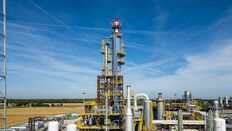- Phase 1 captures 25,000 tonnes of CO2 annually from Eni's Casalborsetti plant.
- CO2 is transported via reconverted pipelines to the Porto Corsini Mare Ovest platform.
- Phase 2 aims to store up to 4 million tonnes of CO2 per year by 2030.
- Total storage capacity could reach 16 million tonnes annually based on demand.

Project Overview
Eni and Snam have launched the Ravenna CCS project, Italy's first carbon capture and storage initiative, starting CO2 injection activities in Casalborsetti. The project aims to support industrial decarbonization by capturing, transporting, and storing CO2 emissions.
Phase 1 Details
Phase 1 involves capturing approximately 25,000 tonnes of CO2 annually from Eni’s natural gas treatment plant. The captured CO2 is transported to the offshore Porto Corsini Mare Ovest platform through reconverted gas pipelines and stored at a depth of 3,000 meters in a depleted gas field.
Future Expansion
Phase 2 plans to scale up the project to store up to 4 million tonnes of CO2 per year by 2030, aligning with Italy’s Integrated National Energy and Climate Plan (PNIEC). The total storage capacity could reach 16 million tonnes annually based on market demand.
Technological and Environmental Impact
The project has already achieved a reduction of over 90% in CO2 emissions from the Casalborsetti plant, with peaks of 96%. It is fully powered by renewable electricity, further minimizing CO2 emissions. The Ravenna CCS project is positioned to become a hub for decarbonizing energy-intensive industries in Italy.
Regulatory and Collaborative Efforts
The joint venture will initiate procedures to obtain necessary permits in collaboration with authorities and stakeholders. Eni and Snam are also exploring future reuse of captured CO2, involving local research centers and universities.
